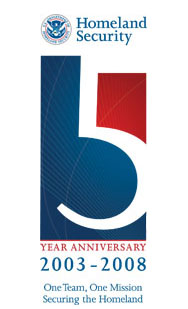
| Home | Information Sharing & Analysis | Prevention & Protection | Preparedness & Response | Research | Commerce & Trade | Travel Security & Procedures | Immigration |
| About the Department | Open for Business | Press Room |

The threat level in the airline sector is High or Orange. Read more.

Why is DHS taking an age-based approach to enrolling drivers in the REAL ID program?
Some commenters proposed that DHS conduct a risk-based assessment based on age in order to decrease costs and lessen the impact on lines at the DMV. DHS analyzed the data and concluded that the commenters were right. Therefore, the final rule focuses on enrolling driving populations that may pose more risk of having or using a fraudulent ID. As a result, persons born on or after December 1, 1964, will have to obtain a REAL ID by December 1, 2014 while those born before December 1, 1964, will have until December 1, 2017. This substantially reduces costs and congestion at the DMV by spreading out the enrollment period over a greater period of time.
What do DMVs need to do to check documents establishing a person’s identity?
All source documents presented by the applicant when applying for a REAL ID document must be verified with the issuing agency. DHS has identified appropriate methods for verifying information presented to the DMVs to demonstrate identity, lawful status, date of birth and Social Security number with the issuing agency. DHS is also assisting states in the development of a verification system hub that would make it easier and much less costly for states to verify the information on source documents with the issuing agency and check with other states to ensure that persons do not have multiple drivers’ licenses.
What is the Machine Readable Technology required, as outlined in the final rule?
The final rule requires a 2-D PDF-417 Machine Readable Zone (MRZ), which is already used by 46 jurisdictions (45 States and the District of Columbia).
Can states issue REAL IDs to illegal aliens?
No. The Act specifies that states must verify an applicant’s lawful status in the United states before issuing a REAL ID license or card. The Act does not prohibit states from issuing other, non-compliant, forms of driver’s licenses and state identification. However, non-compliant REAL IDs cannot be accepted by Federal agencies for official purposes and must be clearly marked as not acceptable for official federal purposes.
This page was last reviewed/modified on August 11, 2008.